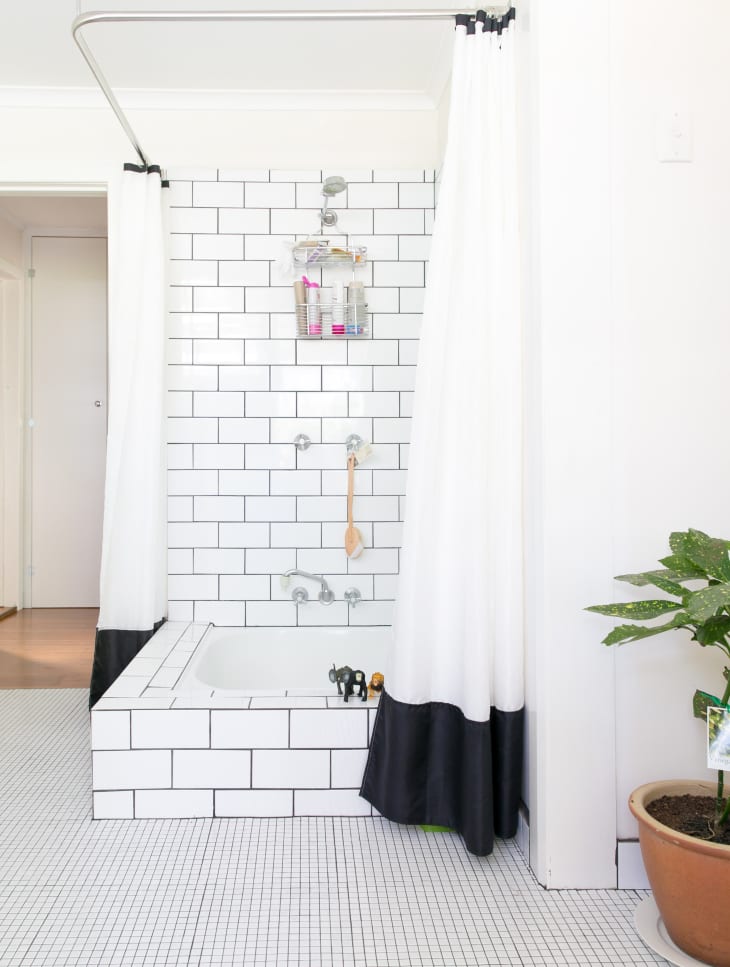Pick Your Pattern: A Visual Guide to Tile Layouts

Before you leap into your kitchen or bathroom renovation, it pays to know the basics. When it comes to regular square or rectangular tiles, nearly every pattern can be boiled down to these five basic models.
The Five Basic Tile Models
From here, you can begin to play with angles, alternating designs, and other treatments that will add dimension and lots and lots of interest. And for further inspiration, Nancy put together a great round-up of some creative subway tile installation ideas.
1. Straight Lay
Basic and easy to install, tiles are laid squarely on top of each other, meeting at the corners. Probably the most common pattern, but that doesn’t make it boring. Play around with color for the tile or the grout, like here in Laura & Ray’s Art-Filled Austin Home.
2. Offset/Running Bond
This one is sometimes called “brick pattern” since it’s the most commonly used pattern in brickwork. The center of each tile is lined up with the edge of the tile above it. You’ll see it really often used for subway tile, like here in Nicole & Ben’s Eclectic Family Pad in Western Australia, but you can lay square tiles or more unusual shapes in a running bond as well.
3. 1/3 or 33% Offset
This is a twist on the basic offset pattern where each tile’s edge is only offset by one-third of the width of the tile above or below. It creates strong diagonal lines in the pattern and is often used instead of the basic offset pattern with larger tiles to hide imperfections, like in this Danish home from Nordic Design.
4. 1/4 Offset
Possibly made up by Mandi of Vintage Revivals, the one-quarter offset is a twist on a twist, inspired by the 1/3 offset but switched up enough to eliminate the diagonal line illusion and create a visual “randomness” without disorder. One row is offset by 1/4 the width of the tile, and the next is offset by half (like a running bond), alternating all the way up the wall.
5. Herringbone
So named because it resembles the skeleton of a Herring fish. This one is the most challenging to install, but it pays off with tons of visual interest. Tiles are laid in “V” shapes at alternating 45-degree angles, as seen here in Sophie’s Modern Vintage Mix in Western Australia.